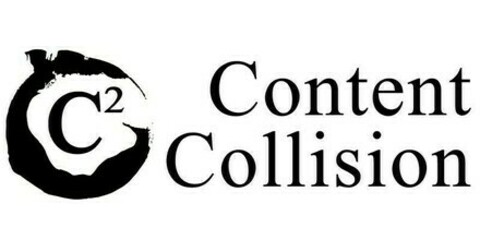How tech is helping PR pros achieve better results
Discover the tech helping PR teams write, pitch, and track media coverage more effectively.

In many ways, public relations (PR) still rests on a familiar foundation: you pitch stories to journalists, connect with media outlets, and hope to secure coverage for your company.
But let’s face it—technology has started changing the way we approach these tasks. While AI is often at the center of the discussion, the impact is broader, touching everything from how we write press releases to how we track their performance.
In this article, we’ll explore practical examples of tech tools used in PR today, focusing on real-world applications that could fit into your team’s workflow.
Whether you’re looking to save time or improve your pitching strategy, these insights might help you rethink your current approach.
AI-powered press release writing
Drafting a press release can be a time-consuming process. Even experienced PR pros can find it challenging to start from a blank page, especially under tight deadlines.
AI writing tools like ChatGPT and Jasper AI have stepped in to streamline this part of the job. By inputting basic details—such as company news or product updates—these tools generate a first draft in minutes. It’s not about replacing the writer but offering a quick start, allowing you to refine and focus on the final message.
Other examples of implementing this technology, aside from Jasper and ChatGPT, include Muck Rack’s integration with PressPal.ai. This AI feature helps PR teams draft press releases quickly, giving them a head start on content creation. It’s designed to speed up the process while maintaining the quality and clarity of the final output.
Enhanced media databases
Finding the right journalist can feel like searching for a needle in a haystack, especially when relying on outdated media lists. Muck Rack also has modernized this process by using AI to keep journalist profiles updated in real-time.
Instead of static contact lists, you get a dynamic database that reflects recent articles, social media activity, and current interests of journalists. This approach helps PR teams tailor their pitches more effectively.
Falls & Co, a PR agency, uses Muck Rack’s media database to stay informed about the media landscape. By understanding what journalists are currently covering, they can craft more targeted and relevant pitches, increasing the chances of a response.
AI-powered media monitoring
Media monitoring has always been a crucial part of PR, but manually tracking coverage across multiple channels can be overwhelming.
Brand24 offers a solution with its AI-powered monitoring tool, which scans a wide range of sources—from online news and blogs to social media and podcasts. It analyzes mentions, providing insights on sentiment, reach, and engagement.
This kind of tool helps PR teams quickly identify trends, spot potential issues, and measure the impact of their media outreach. Instead of waiting for a summary report, you get immediate feedback, allowing you to make timely adjustments if necessary.
Creating interactive press releases
The traditional press release format can sometimes fall flat, especially in a digital-first world where engagement matters. Newswriter.ai aims to change that by offering a platform to create interactive press releases. It goes beyond plain text, allowing PR teams to embed videos, images, and hyperlinks, making the release more visually engaging and informative.
For companies looking to stand out, an interactive press release can be a useful tool. It provides journalists with a richer experience and makes it easier for them to find the information they need. This approach not only captures attention but also increases the likelihood of coverage.
Real-time analytics and sentiment analysis
After sending out a press release, tracking its performance can be a guessing game without the right tools. Mentionlytics steps in here with its real-time analytics and sentiment analysis features. It helps PR teams monitor media coverage as it happens, providing a clear picture of how the public and the press are reacting to the news.
This immediate feedback is invaluable. If the sentiment isn’t what you expected, you can quickly adjust your messaging or clarify misunderstandings. It’s about having the data you need to make informed decisions on the fly, rather than relying on hindsight.
Even with these tech tools, many PR teams continue to use professional PR distribution services to maximize their reach and credibility. For more on how these services complement in-house efforts, see our guide on top PR distribution solutions.

The role of technology in PR isn’t about replacing professionals—it’s about providing the right tools to help them work more effectively. From writing and pitching to monitoring and analysis, these tech solutions offer new ways to handle familiar tasks. By integrating these tools into your workflow, you can streamline processes, enhance your targeting, and respond to feedback in real-time.
For PR teams looking to stay competitive, experimenting with these emerging technologies could be a step toward achieving better results. The industry may still be rooted in traditional practices, but there’s no denying that tech is making those practices more efficient and insightful. If you haven’t explored these tools yet, it might be time to give them a closer look.
Frequently asked questions (FAQs)
How is technology used in PR?
Technology in PR helps streamline tasks like writing, pitching, and monitoring. AI tools like ChatGPT and Jasper AI quickly draft press releases, while enhanced databases (e.g., Muck Rack) help find the right journalists. Media monitoring tools like Brand24 track mentions and sentiment in real-time, and platforms like Newswriter.ai create interactive press releases with videos and links to boost engagement.
What are the new PR technologies?
New PR technologies include AI writing assistants (ChatGPT, Jasper AI), dynamic media databases (Muck Rack), real-time media monitoring (Brand24), interactive press release platforms (Newswriter.ai), and sentiment analysis tools (Mentionlytics). These innovations aim to save time, improve targeting, and give PR teams better insights for their strategies.
Content Collision provides performance-based digital PR services and B2B content marketing services for tech startups in APAC and beyond. Book a discovery call to learn more.



